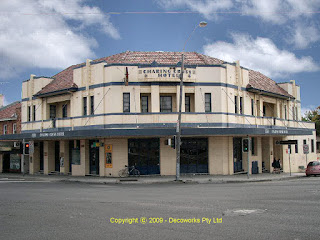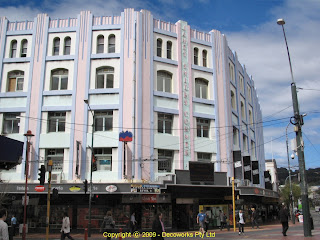ACI House

ACI House is located at 52-58 William Street in Woolloomooloo and is also known as Peejays House, Australian Consolidated Industries and Hoskins Block. Designed by the prominent archtectural practice of Stephenson and Turner with Arthur Baldwinson for the Head Office and showrooms for the glass manufacturers, Australian Consolidated Industries. It is a fine example of an Inter-war Fuctionalists style commercial building. The building is listed in the RAIA Registry of Significant 20th Century Buildings and was completed in 1941. Facade detail It has eight storeys clad in burgundy glass mosaic tiles with long horizontal glass block sections on each floor. The curved corner is also built from *insulux* glass blocks spanning up all six floors which serve to reduce acoustic input and retain solar heat. The building is crowned by a floating concrete cornice perforated by large circular cutouts. The use of glass in the construction is carried on into the foyer area as well. Here










